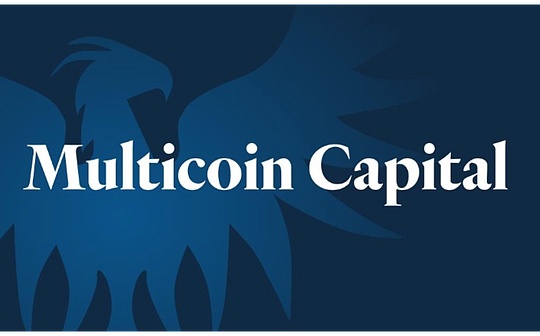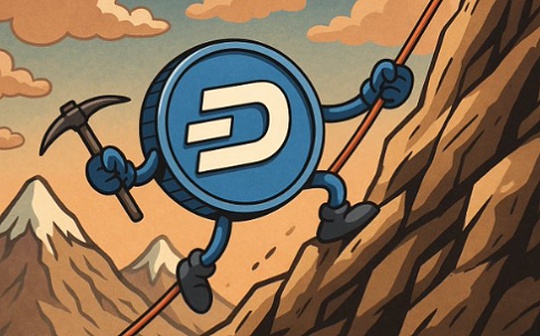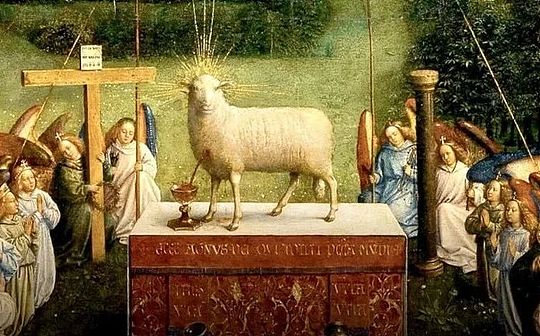
Author: Vishal Kankani & Shayon Sengupta & Kyle Samani, partner at Multicoin Capital; Translation: Bitchain Vision xiaozou
In the traditional financial system, it is almost impossible for ordinary people to create new tradable assets.But encryption makes this a breeze.Today, anyone in the world can create new assets on Solana at nearly zero cost in seconds.
Therefore, user-generated assets (UGAs) ushered in explosive growth.The concept of UGAs has been in the crypto field for some time, initially appearing in the form of social tokens (such as BitClout, FriendTech, etc.), and recently it appears as meme coins (pump.fun) and content tokens (Zora).
Since the birth of the Internet, the basic trading model of the secondary market has not undergone substantial changes.The earliest online brokerage service 30 years ago is almost the same as today’s Robinhood, Coinbase and Phantom.Specifically, if the user enters the asset code (or contract address) he wants to trade in the search box, the asset page will display charts, related news, and of course, buy and sell buttons.
This model not only exists in financial applications, but also runs through all business fields.eBay and Amazon follow this basic process.
Crypto infrastructure makes it easy for software developers to embed asset creation and buying and selling capabilities in any software.Thanks to the flexibility of encryption technology, entrepreneurs have developed brand new issuance platform products and trading models in the past few years, significantly different from the traditional Phantom-style process.The evolution of this trading field has not been fully paid attention to, and we will focus on some observations in this article.
Our partner Shayon mentioned a variation of this philosophy a year ago in his blog post.
Several trading models and issuance platforms have received significant attention in the past few years, and some areas have great potential but have not yet exploded.
1. Issuing platform/asset creation system: (i) Pump.fun, (ii) Zora
2. Trading mode: (i) single-person telegram robot, (ii) multi-person telegram robot, (iii) Doomscroll information flow, (iiii) trading terminal, (iiiii) live token class, (iiiiii) Tinder interactive interface.
1. Launchpad distribution platform
The first issuance platform in the cryptocurrency space is Coinlist, which pioneered the SAFT (Future Token Simple Agreement) model through Filecoin sales in 2017 and tried to comply with ICOs.Although Coinlist has undergone transformation, it still supports new project issuance, including the sales of verification nodes of DoubleZero in our investment matrix, and the sales of community tokens for Pipe Network.
At the end of 2019, Binance launched the Launchpad product and has been used to this day. The platform will select assets on the shelves.
During the Layer1 explosion period from 2020 to 2022, dozens of teams developed an issuance platform, mainly as an ecological seizing tool for emerging public chains such as Solana, Polkadot, and Avalanche.As far as we know, most of them have disappeared.
Obviously, none of these platforms have solved the issuance problem.But in early 2024, pump.fun made a breakthrough.
After overcoming the issuance problem, pump.fun began to expand to the upstream and downstream of the technology stack – launching self-developed AMM and new trading models respectively.
We believe that the binding curve + graduation mechanism pioneered by pump.fun cannot be the only solution to establish trust in meme coin issuance.We are still looking for teams that have unique insights into the microstructure of the market and can design better issuance mechanisms and trading models.
Recently, Zora has tried to inspire consumer behavior around content tokens, but this idea seems to have not yet achieved product market fit.
2. Trading mode
Below we will discuss the existing trading model pattern.
(1) Single-person telegram robot
Popular single-person telegram robots include Banana Gun, Unibot, Bonkbot, Trojan and Maestro.These robots usher in explosive growth for the first time in the summer of 2023.For users who are used to Phantom-style interfaces, these robots are ostensibly confusing.Due to the Telegram API itself, their portfolio management views are very simple.However, they are outstanding in the following aspects:
Convenience – Most telegram robot users are already active in Telegram groups for a long time, hoping to obtain transaction signals.When messages come from other groups, they want to act as soon as possible.In our experience, opening a third-party wallet (such as Phantom) will delay execution by at least 5 seconds, or even 10 seconds.Telegram robots can usually complete transactions in 1-2 seconds.
Sniper function – Based on the understanding of the psychology of telegram robot users, many developers have added the function of automatically sniping new token issuance.These users want to be the first entrants.
Obviously, whether it is single or multiplayer mode, these telegram robots can integrate large language models (LLMs) to achieve more complex transaction types, including lending, revolving strategies, cash deposits, etc.Although this field is full of heat, we believe that the emergence of LLM has not really changed the trading model, it just provides stronger capabilities and flexibility for these new models.
It is worth noting that mainstream wallets such as Phantom and BackPack are likely to integrate LLM robots in the near future.This may blur the line between traditional broker/wallet and telegram robots, but we do not expect this to have a substantial impact on projects focusing on telegram robots.
Many early telegram robots have expanded their product capabilities.For example, Unibot has developed into a complete trading terminal.
(2) Multi-person telegram robot
PVP is the best example of multi-person telegram robots.The PVP robot is in the group chat with your friends.You can send an instruction to the bot, such as /long BTC, which will execute the instruction immediately (as a BTC-USD perpetual contract transaction), and then broadcast the message to the group chat along with the BTC-USD price chart.Next, it will provide quick options for friends in group chats, allowing them to choose to trade orders or operate in reverse with you.
The core value proposition of PVP is not the transaction itself, but the people in the group chat.The main purpose of PVP group chat is not to discover transaction signals, but to camaraderie (comradeship), competition (competition) and comedy (comedy effect).This group of friends brought constant emotional fluctuations.
Work together, share life and death.The solidarity, friendship and competition that this pattern naturally forms is very unique and cannot be replicated.Once users participate, the retention rate remains high.
Currently, PVP mainly conducts perpetual contract transactions on Hyperliquid.But it’s easy to imagine other multi-person telegram bots expanding to meme coins, assets with fundamental logic, stocks, and most obviously, sports betting.
(3) Doomscroll information flow
We use the word “Doomscroll” as kindly as possible.Doomscroll information flow now dominates the Internet: Twitter, Instagram, TikTok, etc.They are the ultimate content aggregator.
Farcaster, Lens, 0xppl, Bags, and more recently Zora, all attempted to build a new Doomscroll stream similar to Twitter or Instagram, but with built-in encryption native features (such as transactions).The common challenge these networks faced so far is the lack of interesting content.The network effects of Twitter, Instagram and TikTok have proven to be almost unshakable.
Zora is arguably the most interesting one, partly because it combines asset creation and new trading models.Zora is building an Instagram-inspired stream where each piece has its own supply of 1 billion meme coins, 1% is automatically allocated to post creators.Zora emphasizes the philosophy of creators monetization most; however, at least the challenge is that people don’t know why they want to collect anything from Zora.
As far as we know, traditional crypto wallets (Phantom, MetaMask, Backpack, Rainbow, etc.) have not tried to introduce any form of Doomscroll information flow.Coinbase Wallet announced that it will integrate Farcaster in an upcoming release; however, this is unlikely to address the quality and quantity of content Farcaster faces.
A handful of teams, including token.com and Involio, are trying to curate specific content streams that crypto traders want to see and embed transaction execution into content discovery.These products are very similar to TikTok, but naturally superimposed on crypto trading capabilities.This is an interesting design space.Rather than trying to create a completely new content aggregator, these companies are trying to layer over existing aggregators (although it may be less stable in practice due to the aggregator’s third-party API support).
Vector builds a Doomscroll product whose basic unit of information flow is not a traditional social media post (text/picture/video), but a deal.In our opinion, this is the most interesting way to build crypto-native Doomscroll products, because it embodies the concept of “voting with money” better than the content-first Doomscroll information flow.
One of the big challenges Vector faces is to fill the information flow with interesting transactions (and thus interesting content).We guess that the best Doomscroll products will intelligently use AI to extract data from multiple sources (not just on-chain transactions) and automatically fill in interesting content.
Once Doomscroll information flow is successful, it will have a huge impact.They naturally utilize the dopamine cycle to create amazing engagement.Combined with retail order flow, encrypted Doomscroll information flow may be the biggest consumer opportunity in the encryption field today.It is also the most difficult to grasp.
(3) Trading terminal
It is no accident that traders choose specific interfaces—every trader is involved in a specific game, and they need tools to win the game.Users who download Moonshot after seeing “moo deng” on TikTok have their clear motivations, while traders who make volatile arbitrage based on macro-funding flows choose Deribit for completely different reasons.
Meme coin games are unique, and many traditional perceptions about market structure do not apply to the market makers and takeovers of the game (for example, the statement of “professional traders pay attention to best execution” – the most profitable players in this game often pay 10% slippage just to enter three blocks ahead of their competitors).To summarize the key elements of winning in the pump.fun battlefield in the simplified way, two important variables are speed (speed of discovering assets and completing related transactions) and social signal quality (focusing on the number and quality of audiences of a specific asset).
In essence, meme coins are a manifestation of attention financialization, and the trading supply chain that competes for this attention is constantly evolving.Issuers, KOLs, snipers, retail investors – for better or worse, they are all at a certain stage in this supply chain.The core mission of these trading terminals is to provide supply chain analysis tools that surpass competitors and support rapid action.This means two things: the landing of the fast transaction (usually through the combination of Jito bundled transactions and customized RPC), and the extremely detailed social/address analysis (usually including popular address tags, supply concentration indicators, and high-performance chain state indexes other than a large number of off-chain social/discovery indicators).
The most important lesson we have learned from the observations of the past two years is that traders have no loyalty to the interface they use.
We believe that the core issue at the moment is no longer “Can we build a better Axiom?”As long as there is a team that can achieve faster trading implementation and more valuable signals, traders will migrate.The more interesting question is “How will the meme coin game evolve with new assets and traders?” and the trading interface will inevitably evolve with it.We find it hard to believe that the meme coins attention market structure has reached a stable state.The new semi-professional trading platform will predict the trend like an ice hockey player – the market structure will inevitably change, and new opportunities and new entrants will surely emerge.
(4) Live Tokens
Our investment matrix Unlonely company has explored creativity in the cross-sector of live streaming and tokens.At the end of last year, the live broadcast product launched by the pump.fun team (after suspended and restarted) is attracting market attention.
Live streaming has great potential as a token trading carrier because the anchor can interact with the audience in real time.They can guide viewers to buy and sell tokens based on specific operations, or jointly achieve common goals.The most common pattern is “When the token market value reaches USD Y, the anchor will perform Action X.”The biggest problem with this mechanism is the setting of a ceiling for the token price.
Fishtank is a typical case – essentially a real-time interactive reality show.During the six-week season, rotational contestants were confined to a fully monitored house (each room is equipped with a 24-hour camera).Audiences can purchase tokens to change the environment, send voice messages, trigger challenges (and even deprive participants of basic living facilities such as beds).This interaction mechanism forms the core of the experience, transforming bystanders into active participants who can influence results instantly.
The underlying logic is that the content can be programmed, and audience participation can eliminate the boundaries between producers and viewers.We believe this is an emerging media form – live tokens are traded for real-time content, while trading behaviors in turn shape content.
The related behavior of live tokens is still in its infancy, and no projects have truly achieved product market compatibility.But we think there is a unique space for innovation in this field, especially when it is combined with long-term ideas like social tokens.
(5) Class Tinder Interface
It should be noted that the Tinder-like interactive interface refers to the experience design of executing transactions through left and right sliding.The type of transaction can be a predictive market, sports betting, or a transaction of any asset.The core insight is that this proven “sliding first” interface can facilitate rapid decision-making.
We believe that Tinder-like interfaces are especially suitable for short-term forecasting markets.The most typical example is a real-time contract in a football game that predicts whether to run or pass the next round.It can be imagined to develop supporting applications for various live broadcast scenarios – from the Oscars to the evening news.The content broadcaster has a strong motivation to develop such auxiliary betting functions, which can not only increase participation, but also create profits through order flow monetization.
Kyle tweeted the idea several months ago and received a lot of responses.We always believe that based on this “sliding first” design paradigm that promotes clear action, it is expected to build a considerable and interesting business model.Existing cases include Hookt, Memelut, and Guess.best (although non-sliding mode, but with a showdown mechanism).
3. Click to trade
On the Euphoria platform, bets are just a tap on the screen.Users can bet that the price of an asset will reach a certain level at a specific time through a simple click on their smartphone.In traditional finance, this is called barrier options—usually a complex product exclusive to Wall Street high net worth clients.Robinhood is trying to disrupt this area with a similar feature recently launched “chart trading”.
Euphoria eliminates complexity and provides this powerful mechanism through a seamless gamified interface.It’s fast and engaging.Since 2021, the crypto community has been waiting for structured products, and the click-to-transaction interface may be the key to unlocking.
This click betting mechanism can also be applied to real money mobile games.Each click is a bet, and crypto infrastructure provides winners with instant, secure payments.
4. New mode, new potential unicorn
As trading capabilities are integrated into all software, the boundaries between culture and finance will blur—the instantaneous assets created by trends, narratives and the native creativity of the Internet will become popular.In this world, attention breeds fluidity, and fluidity creates more attention.
These applications will become the first choice for consumers to discover, trade and entertain.Apps that provide a perfect user experience across different modes will dominate the order flow, which can generate both substantial revenue and ultimately achieve extraordinary results.
These applications are not only wallets that store assets and provide portfolio overviews—they will be places for users to discover, trade, and socialize.The signal provided by a transaction is far better than likes and retweets because it requires users to take financial risks.Ultimately, the AI algorithm will integrate trading signals to decide what to show to the user, even if the user turns off trading functionality in its Doomscroll stream.
The future of finance is spread all over the software, not just professional portfolio viewing tools.








